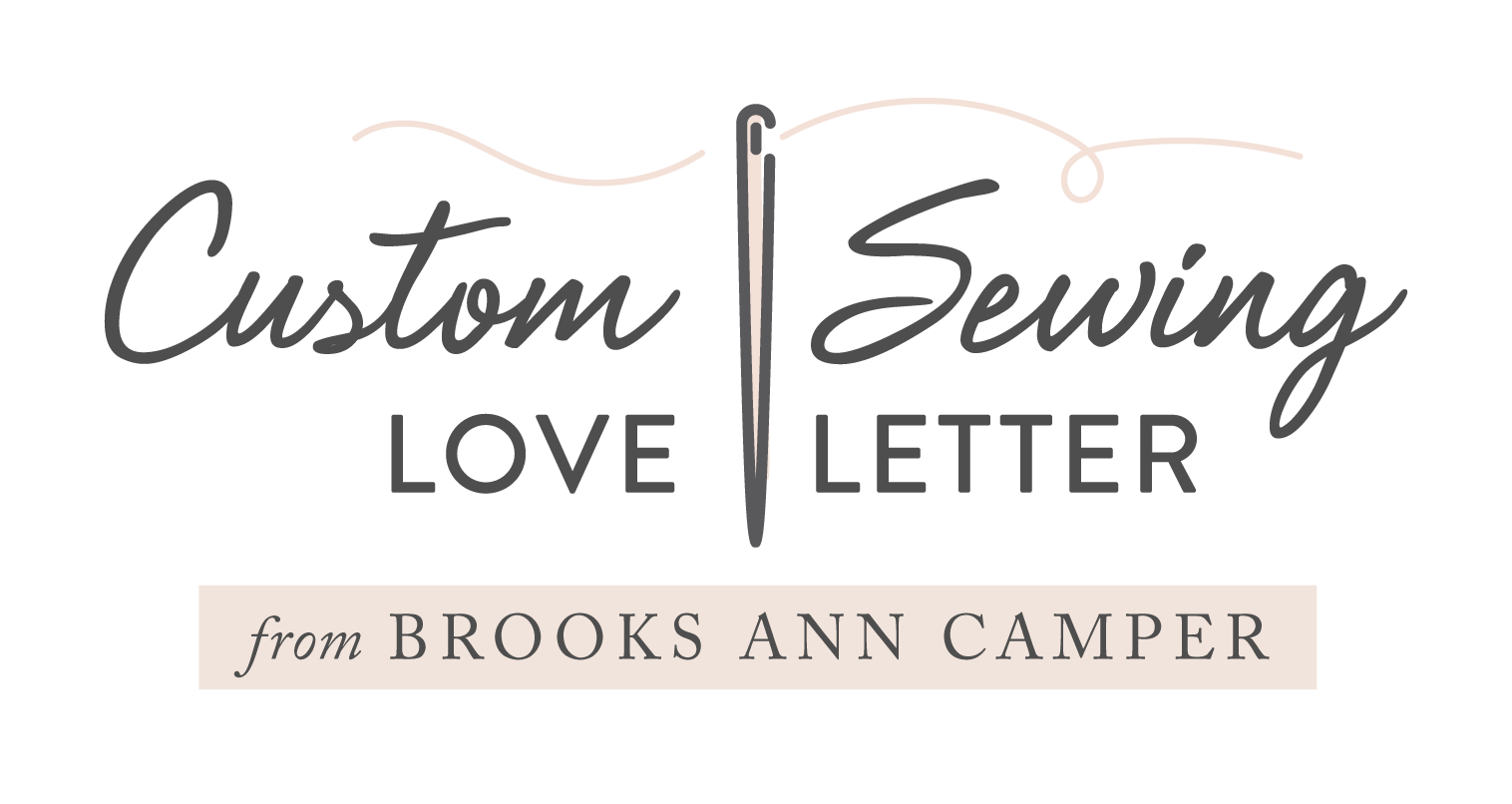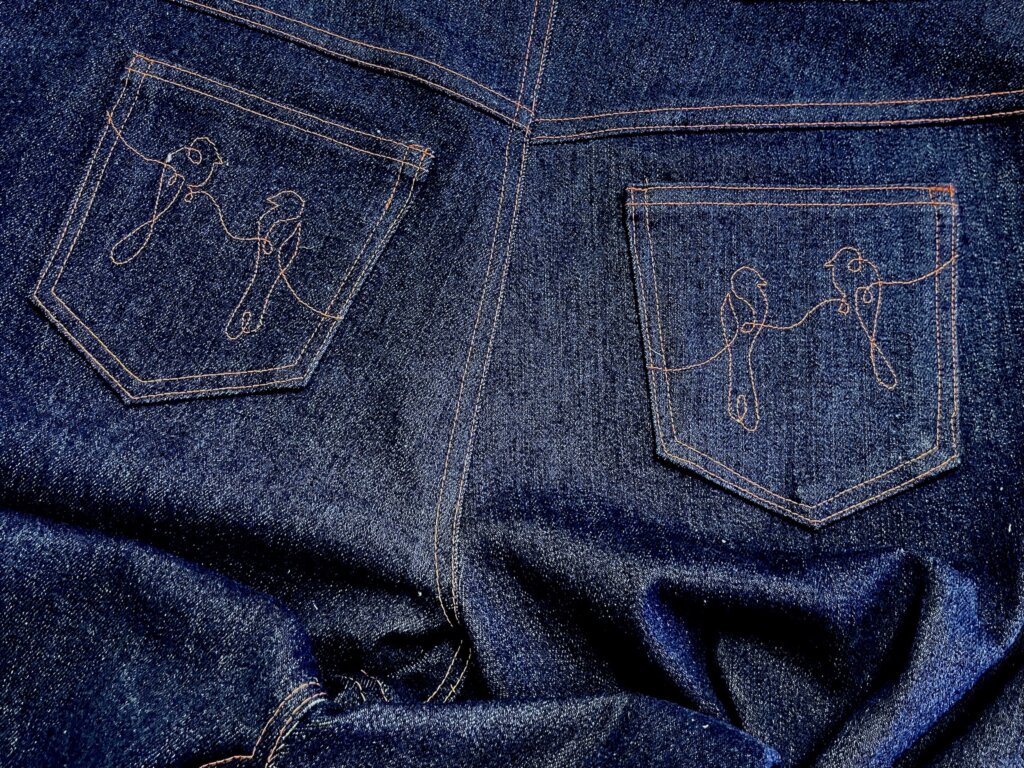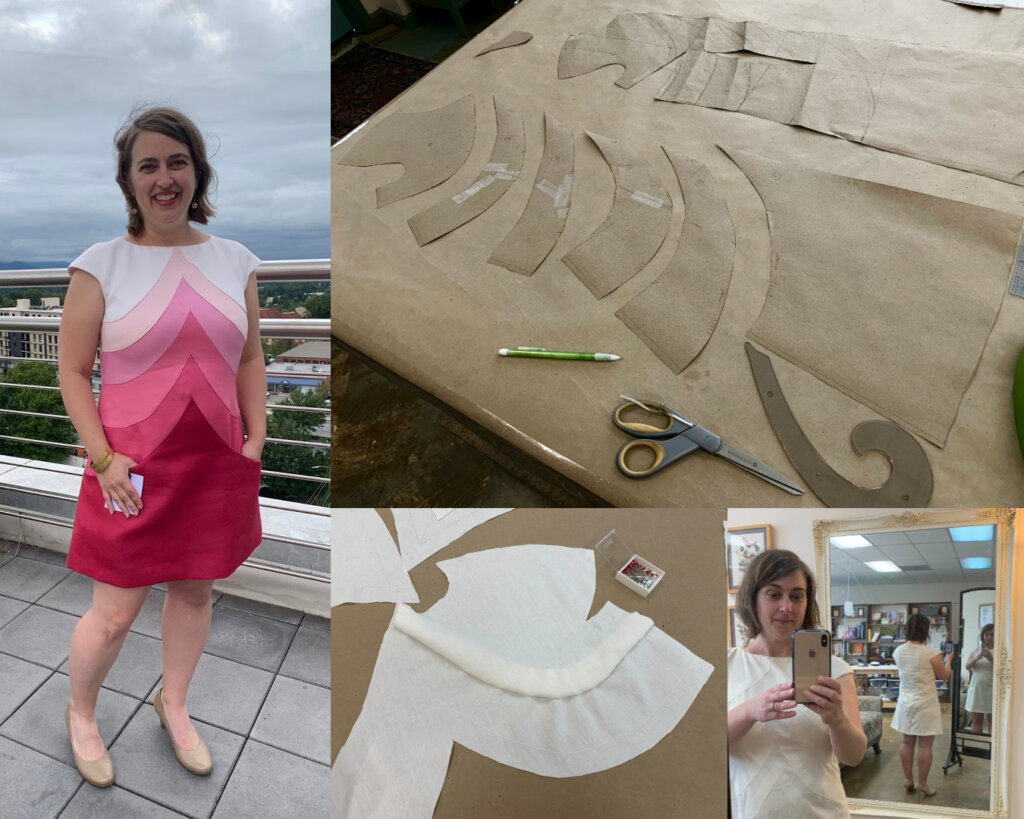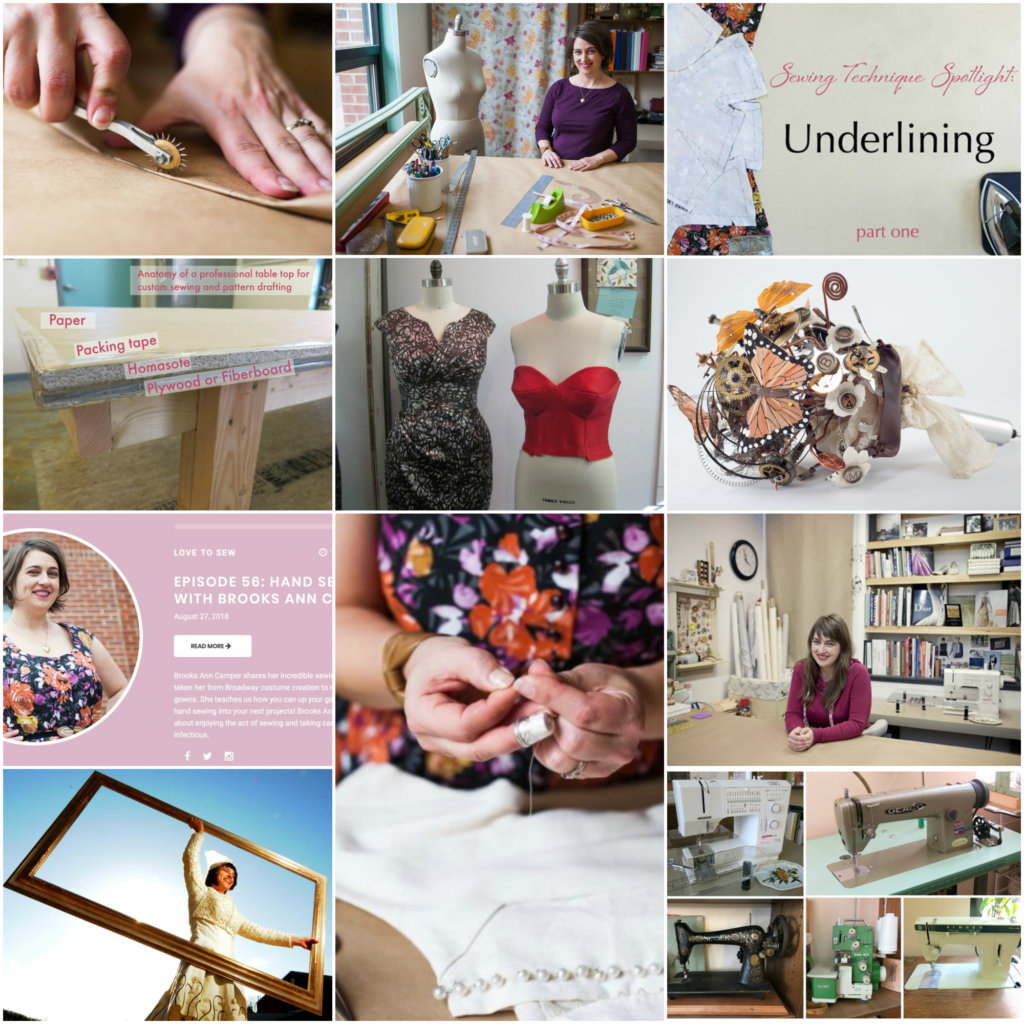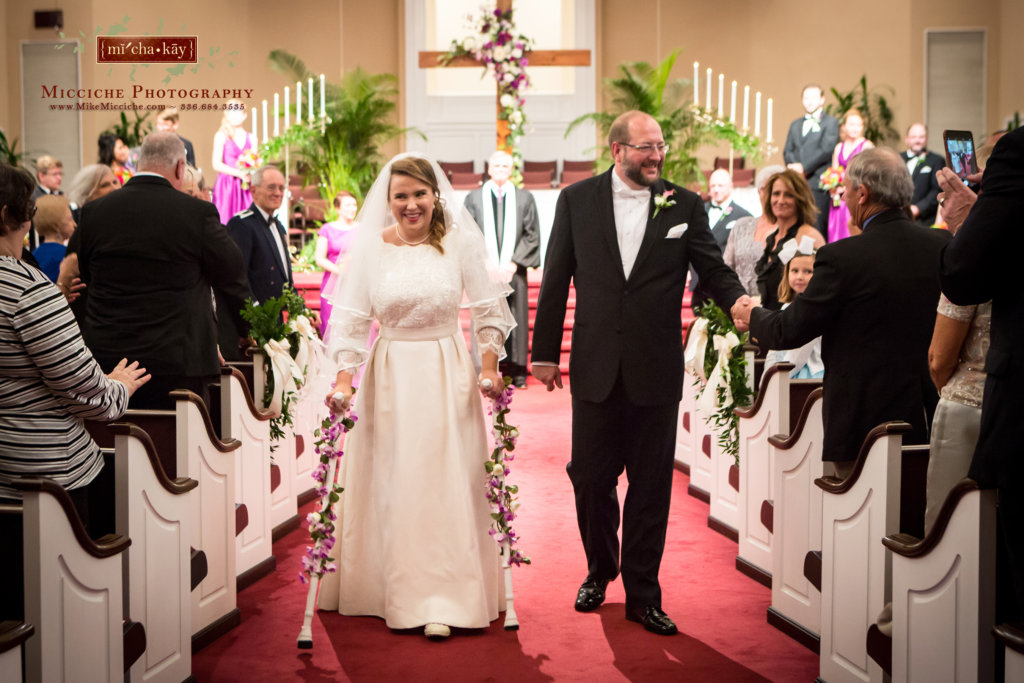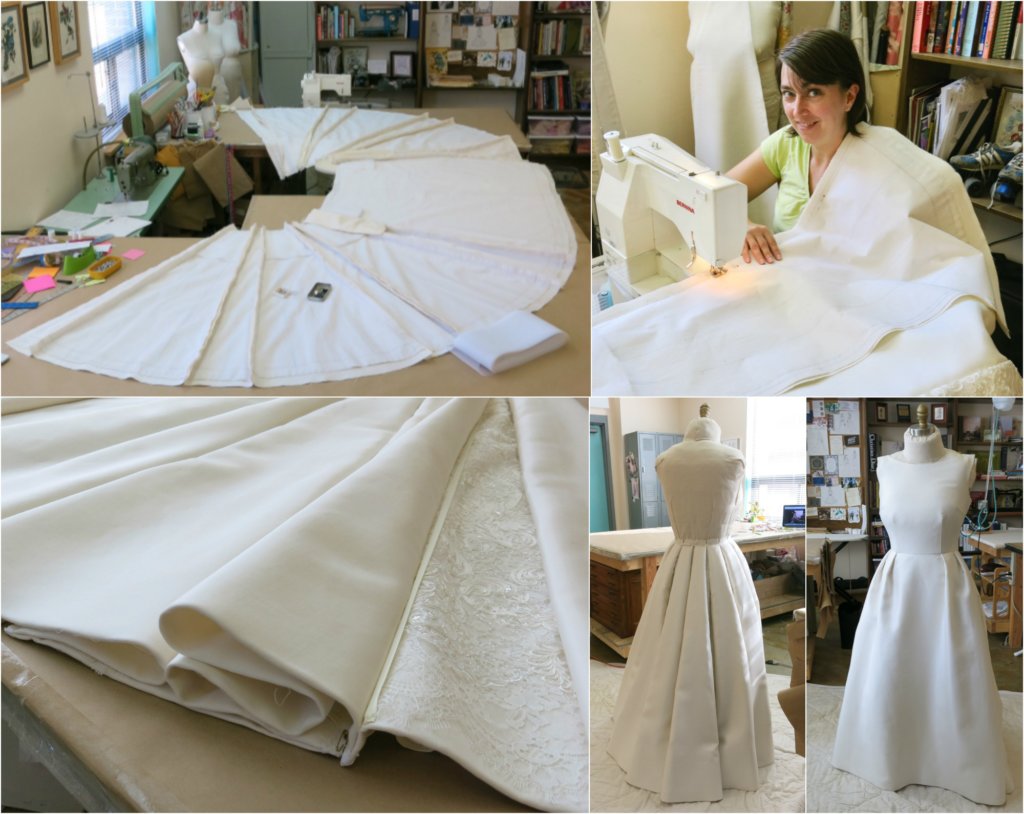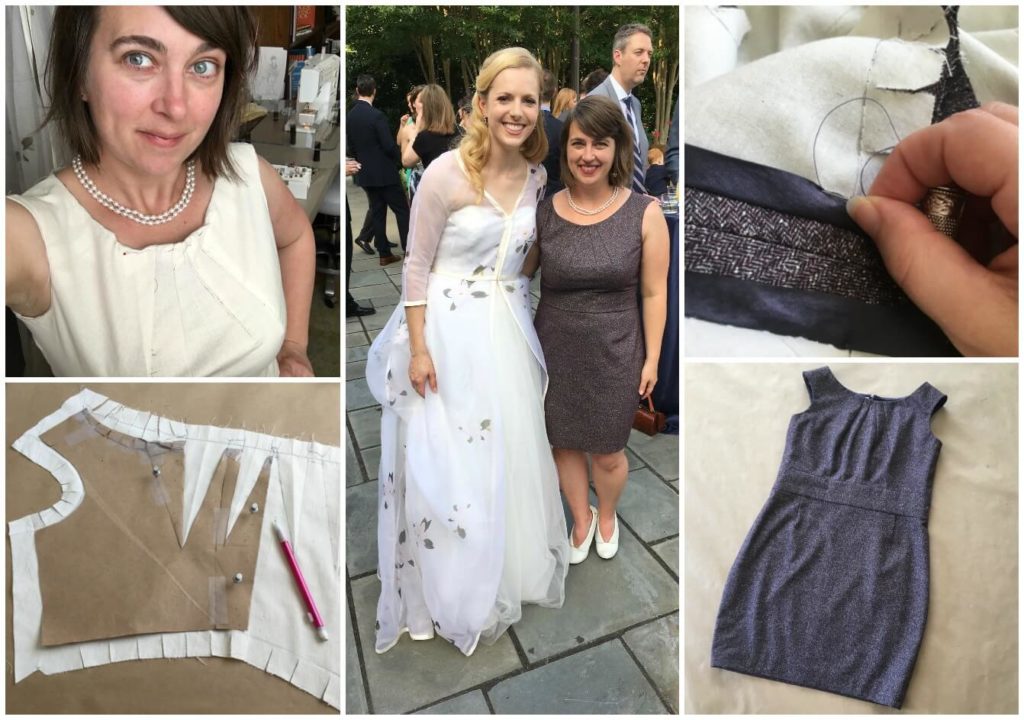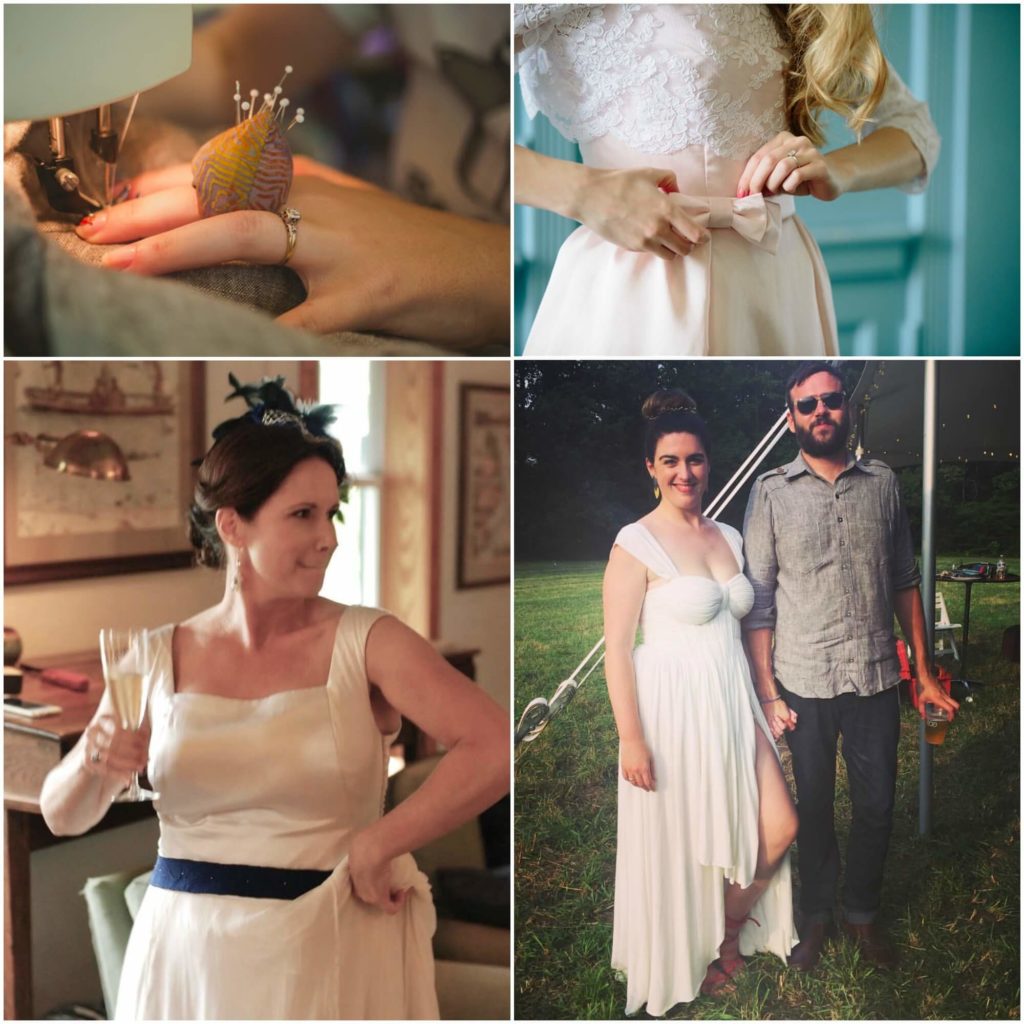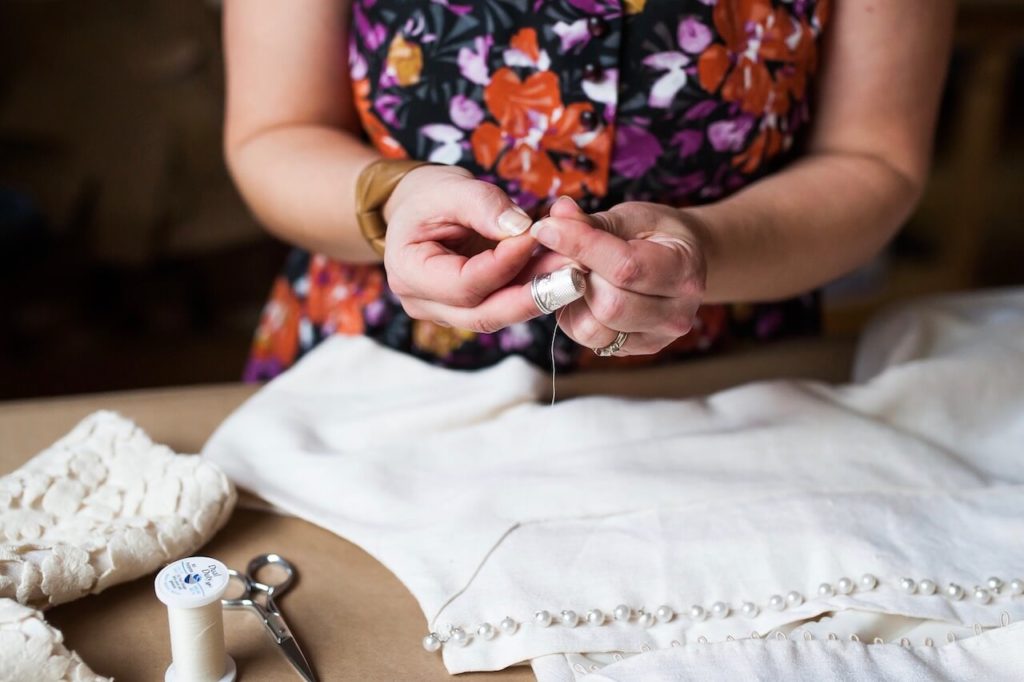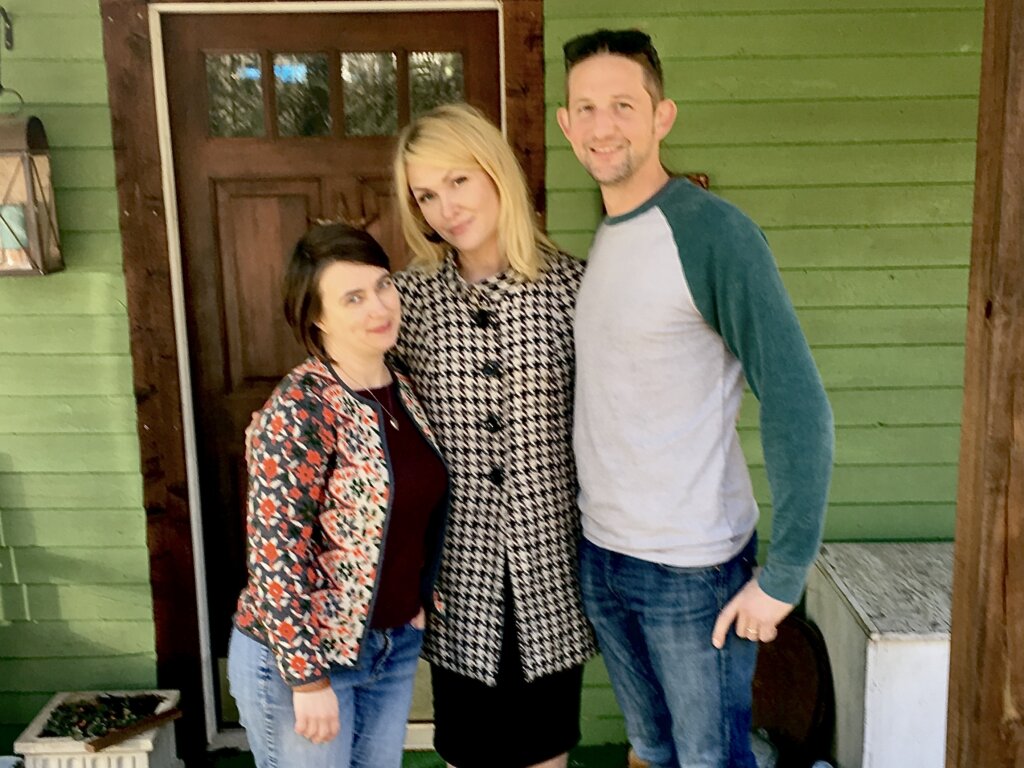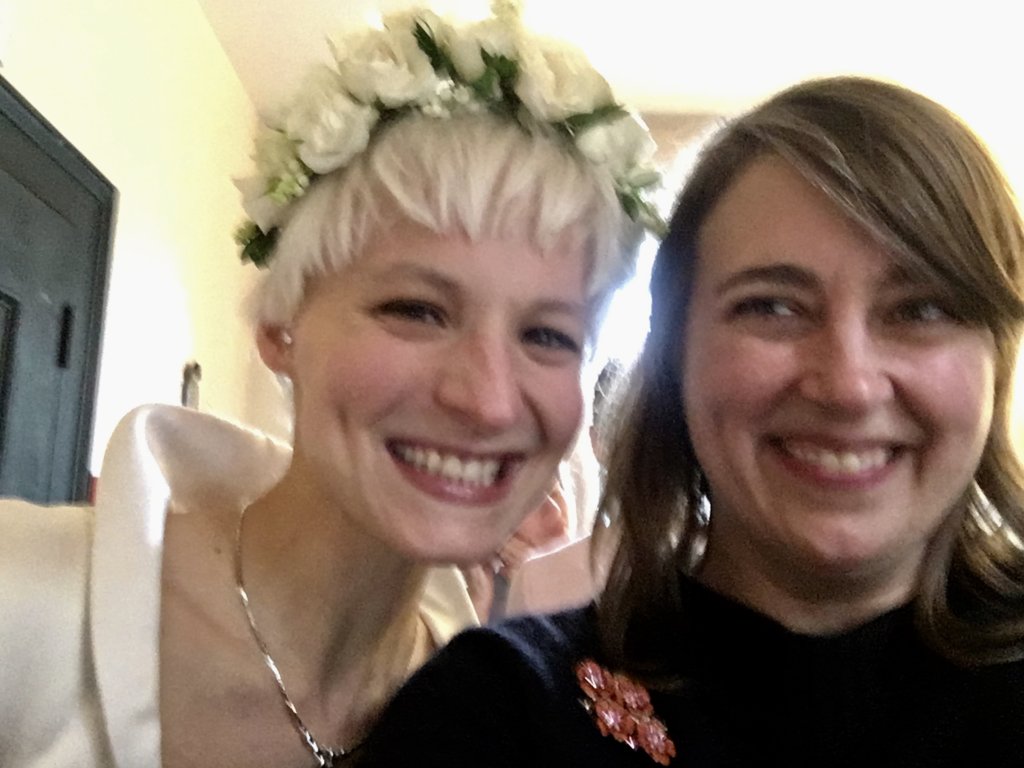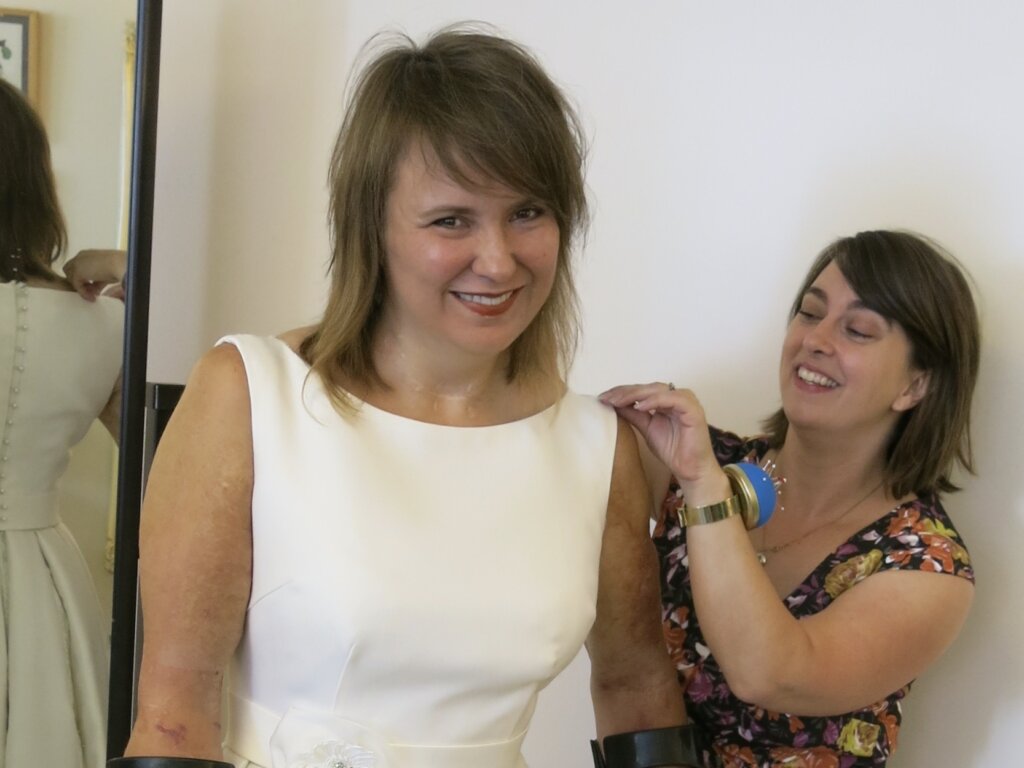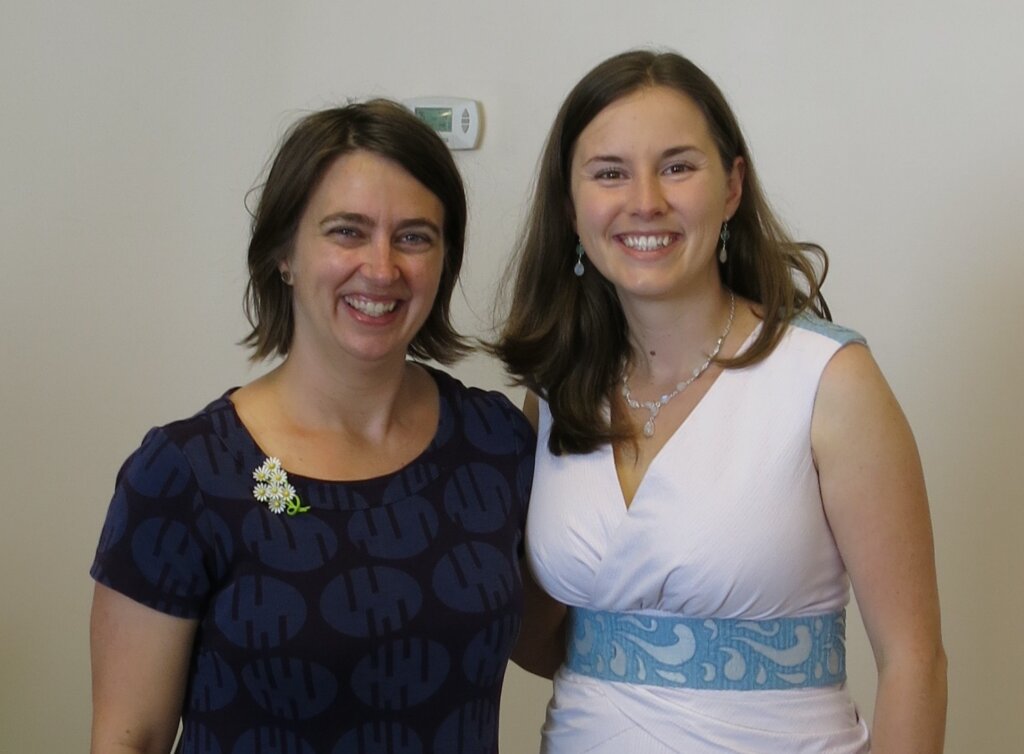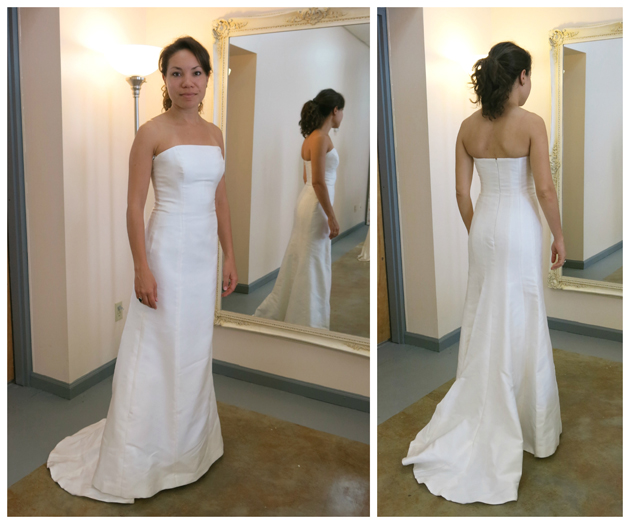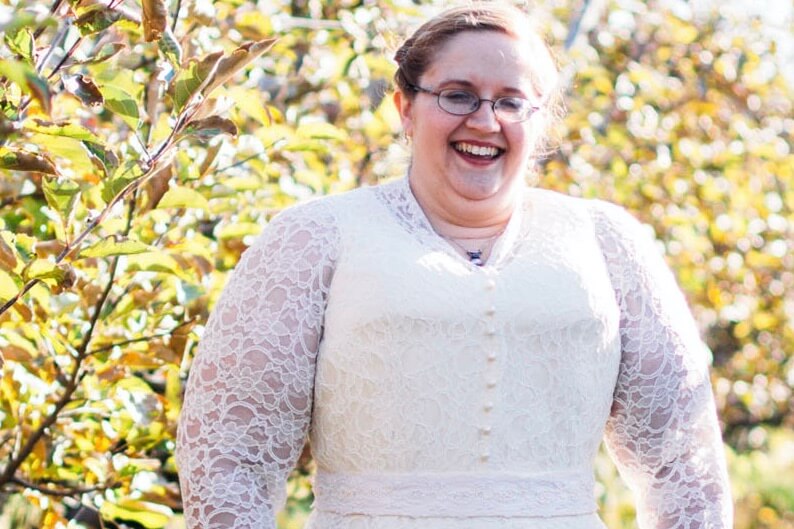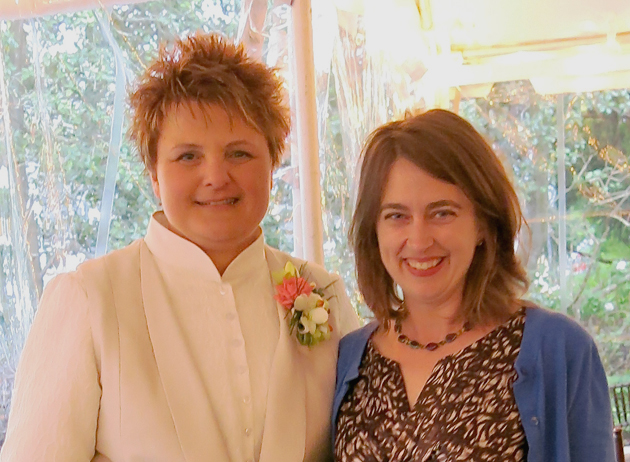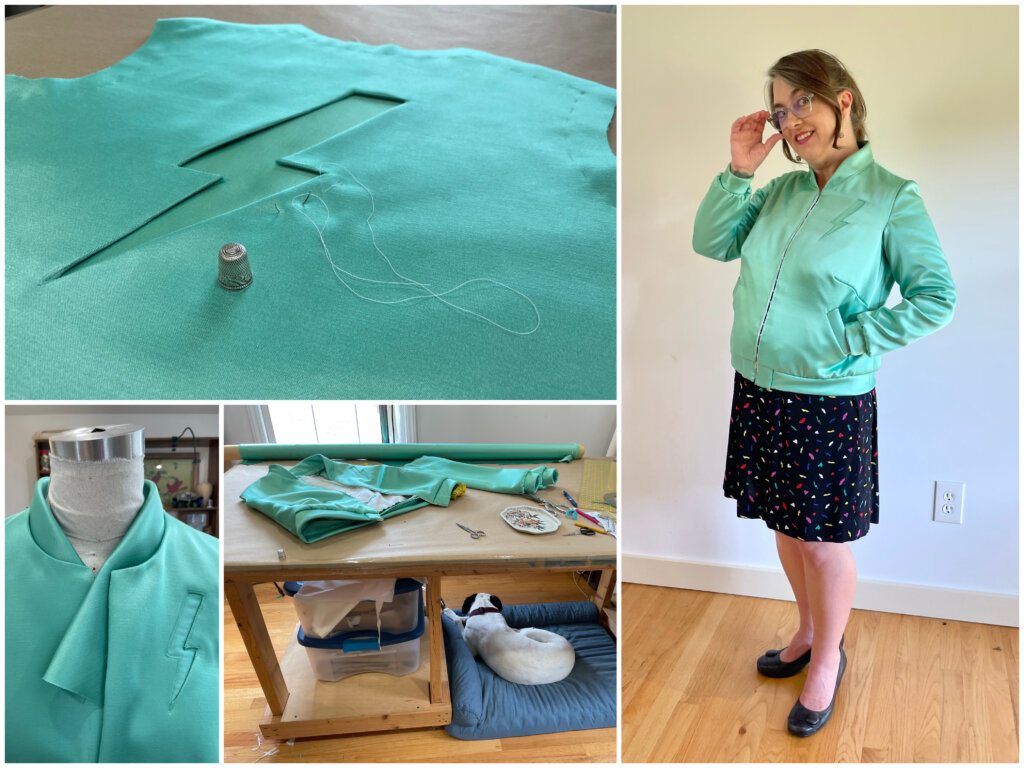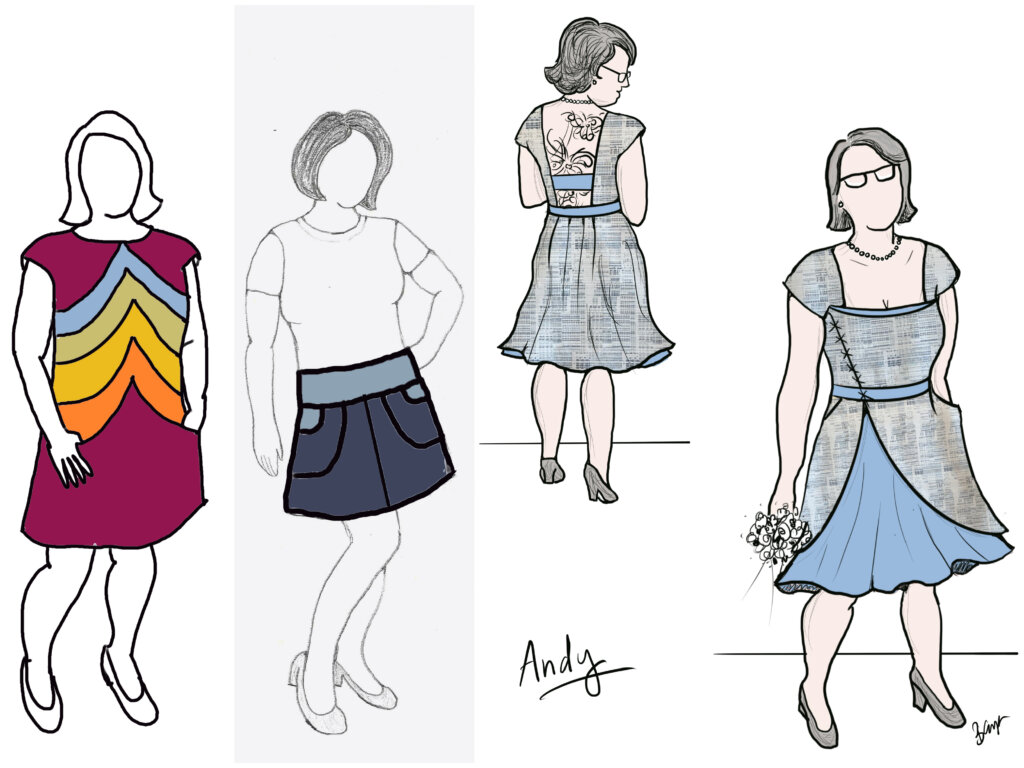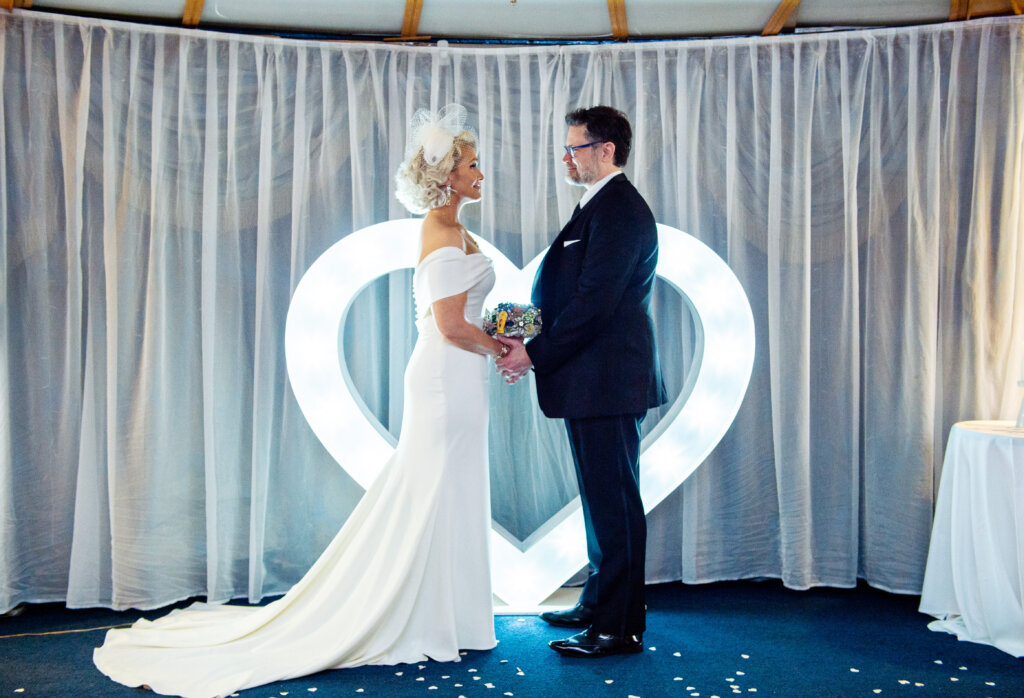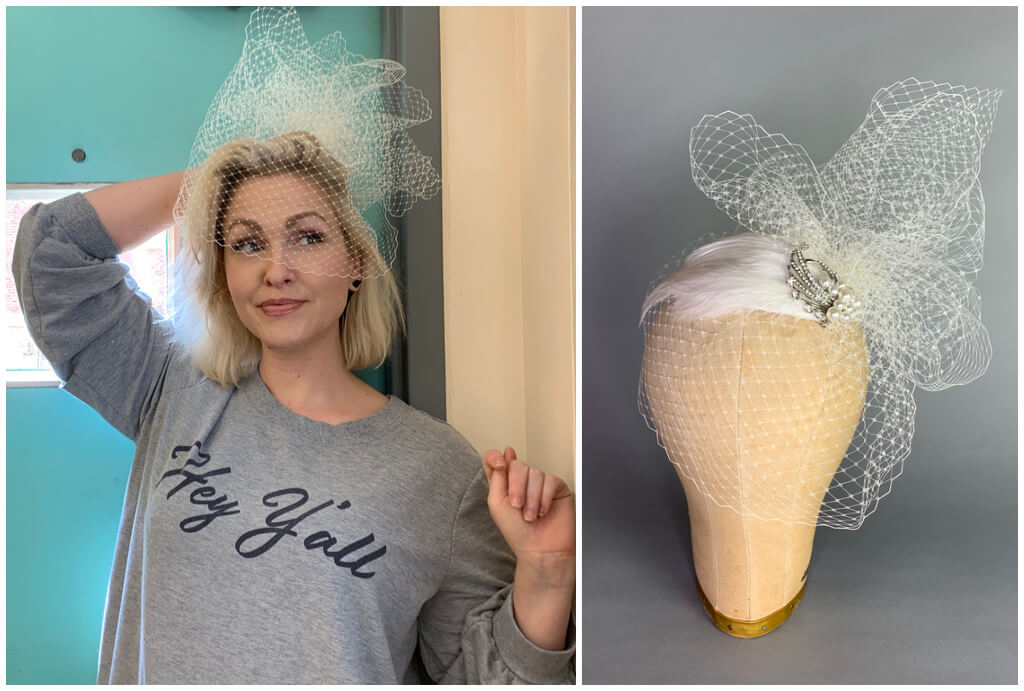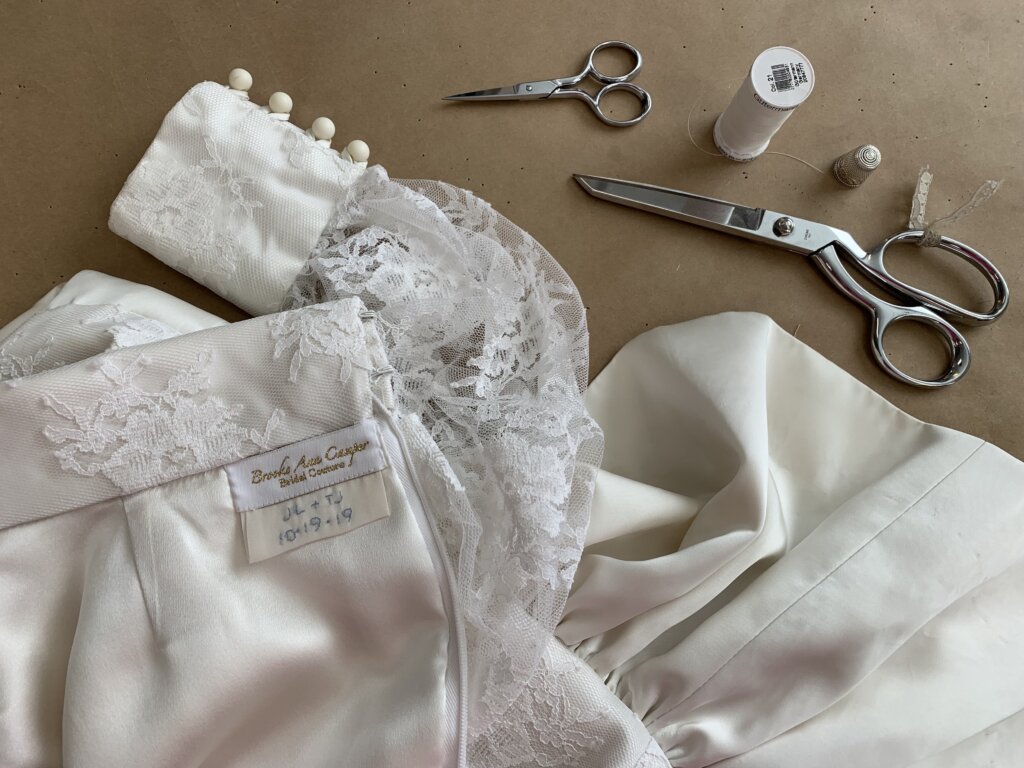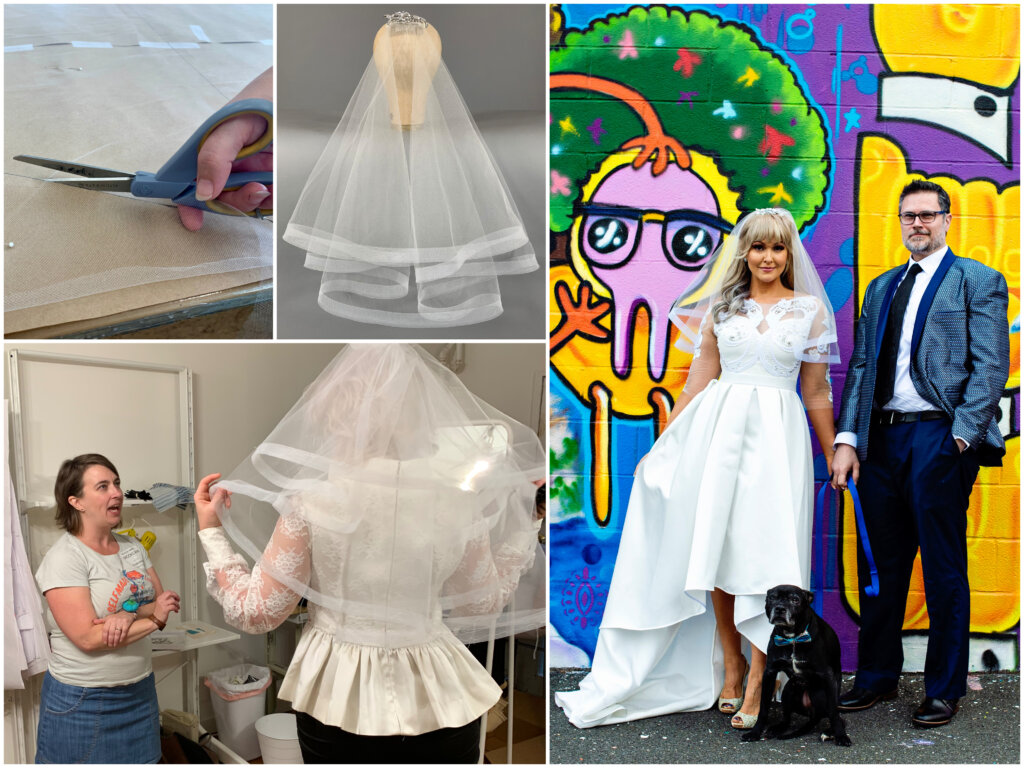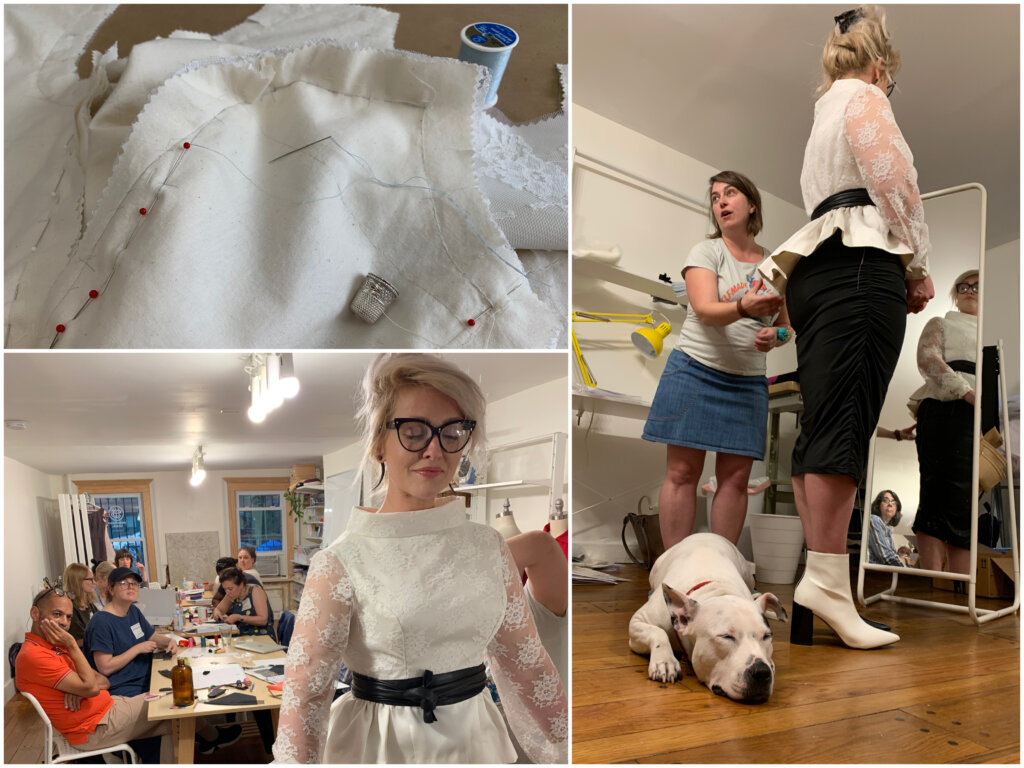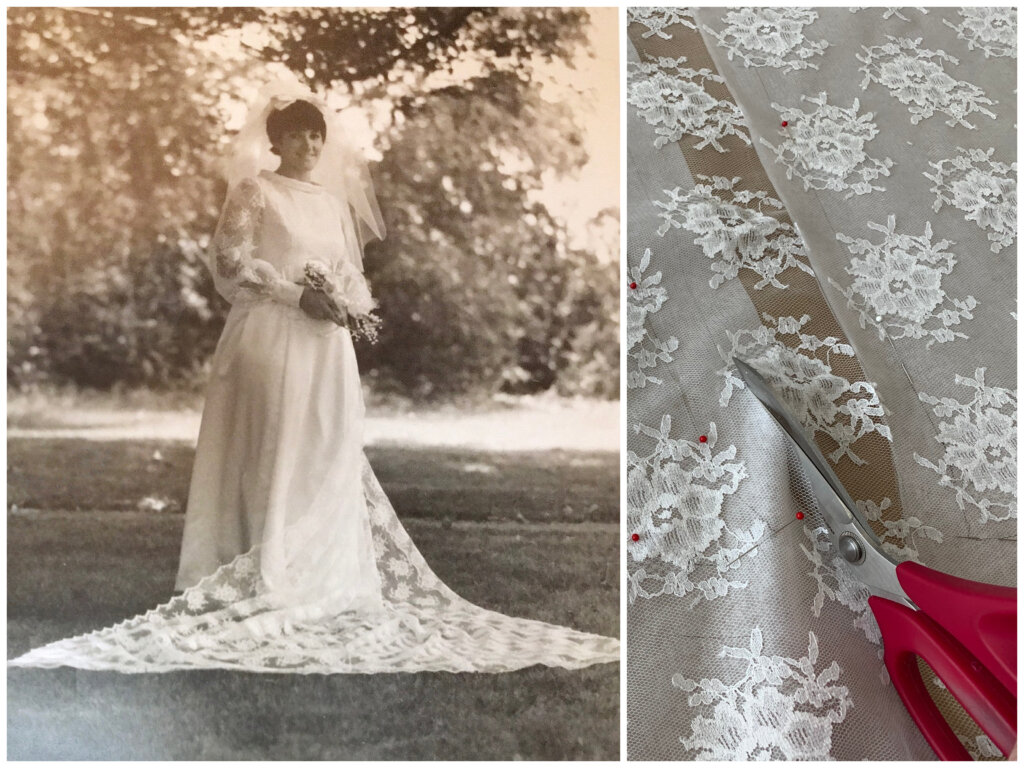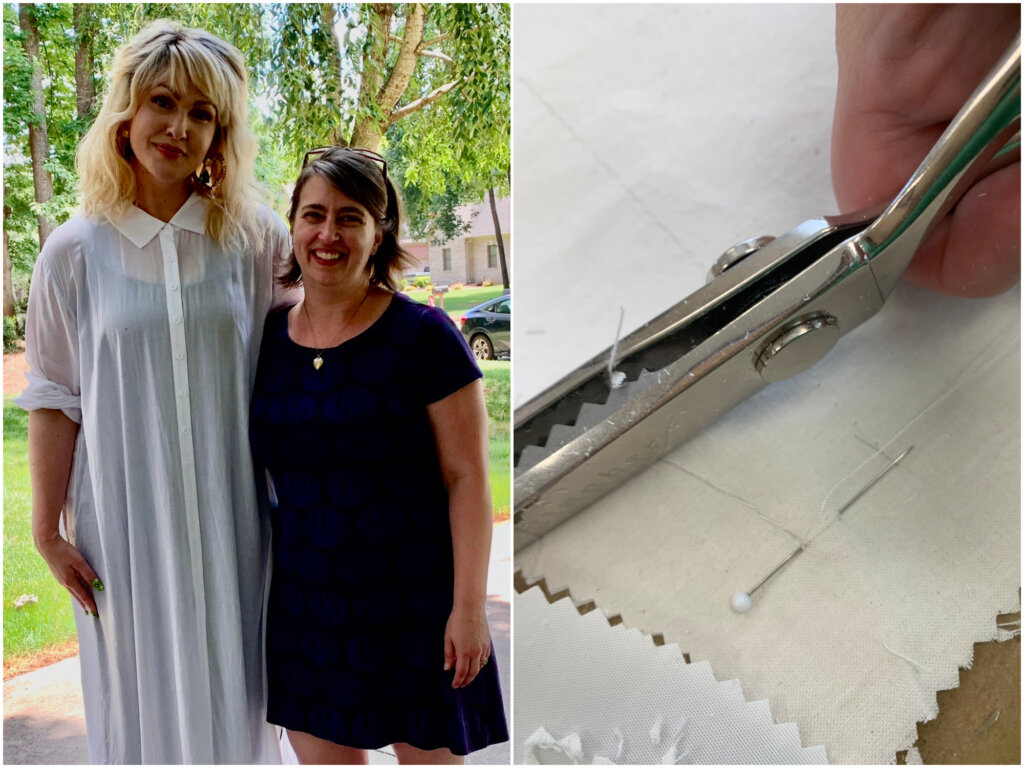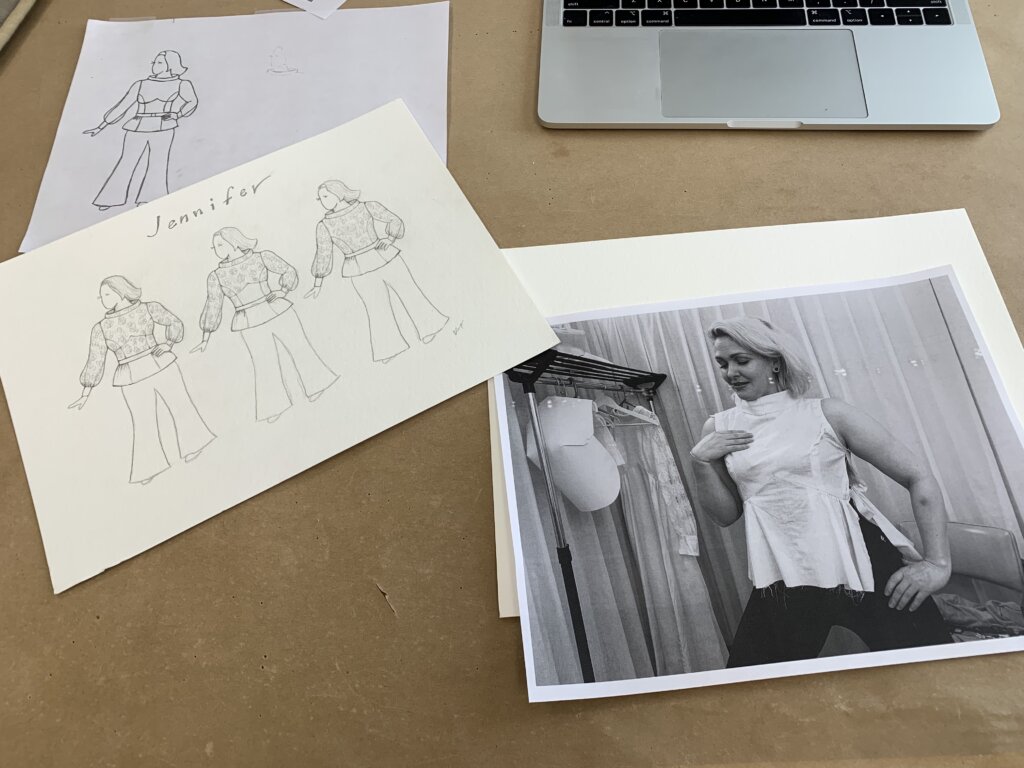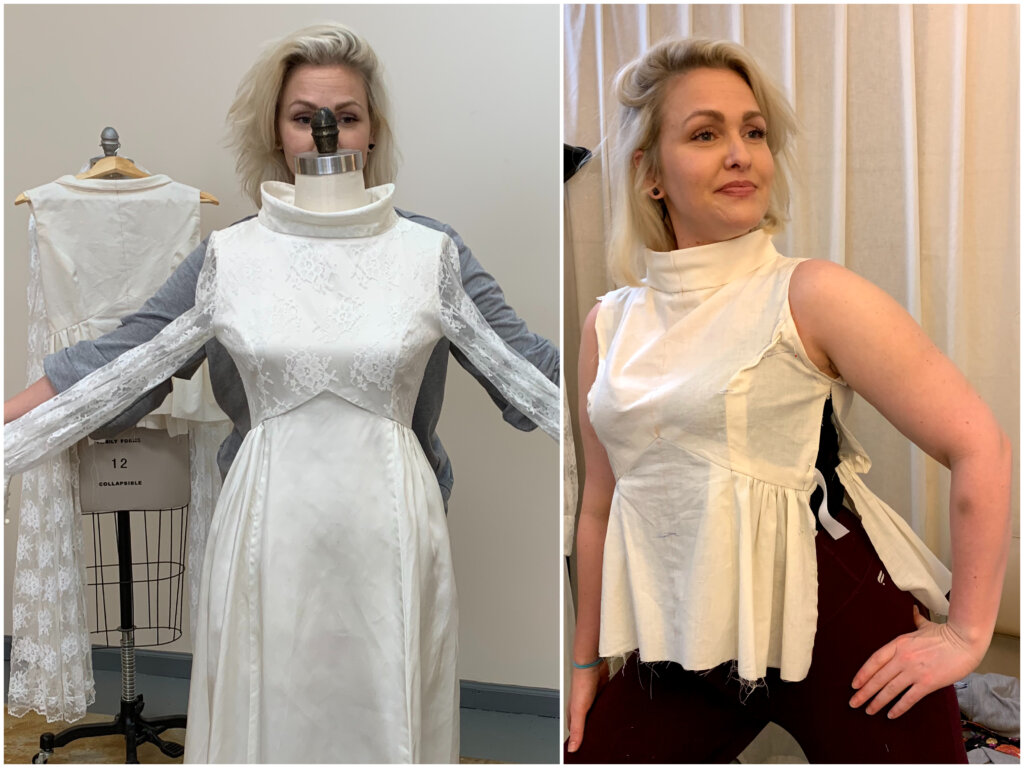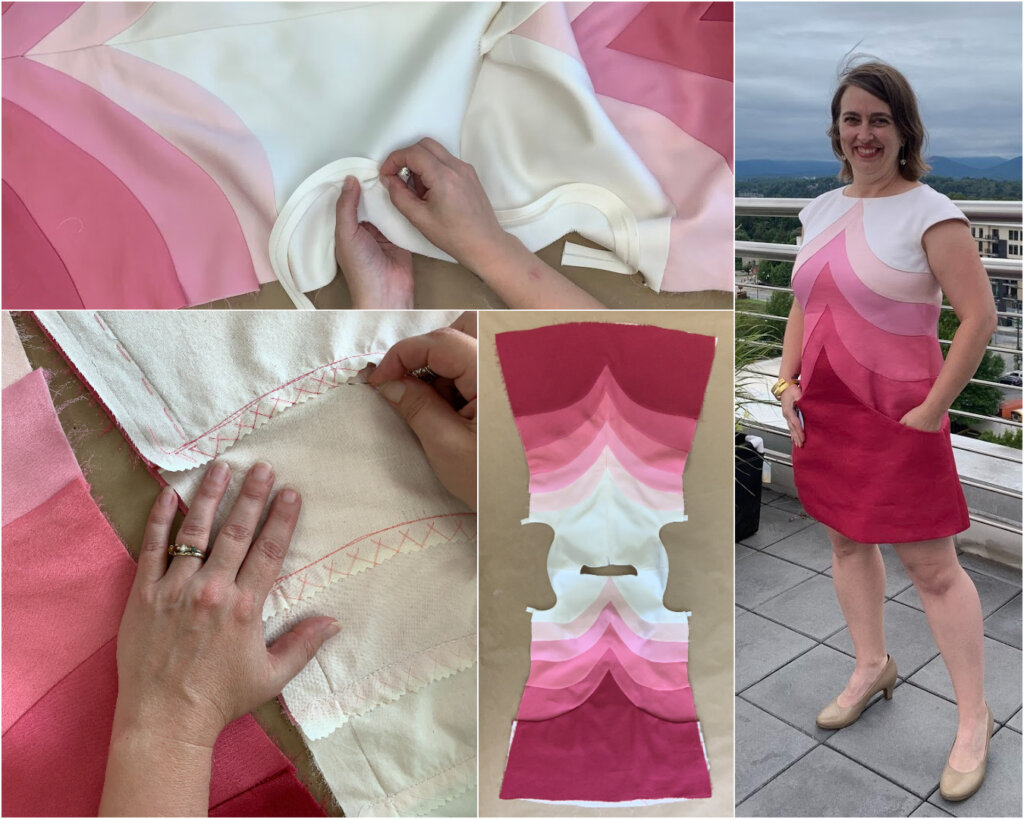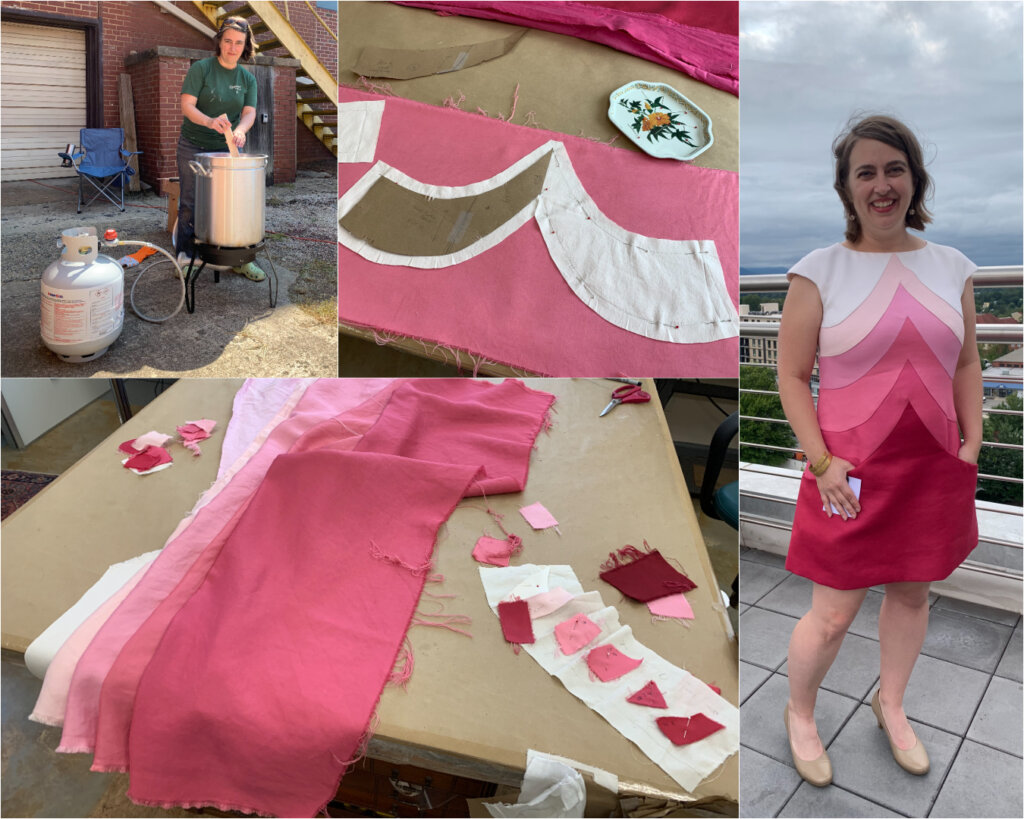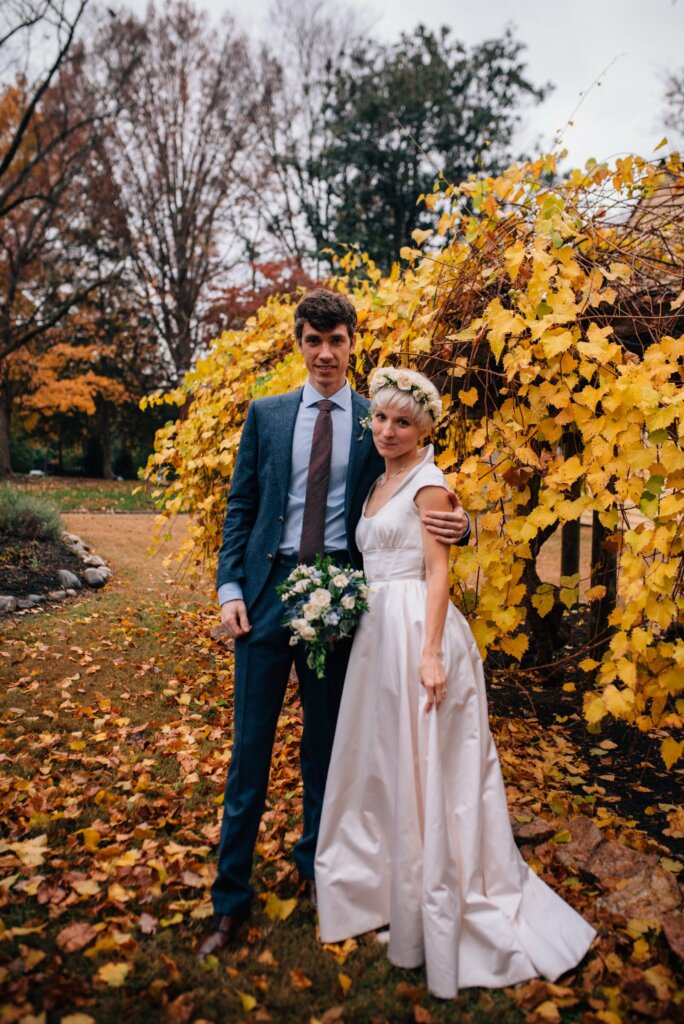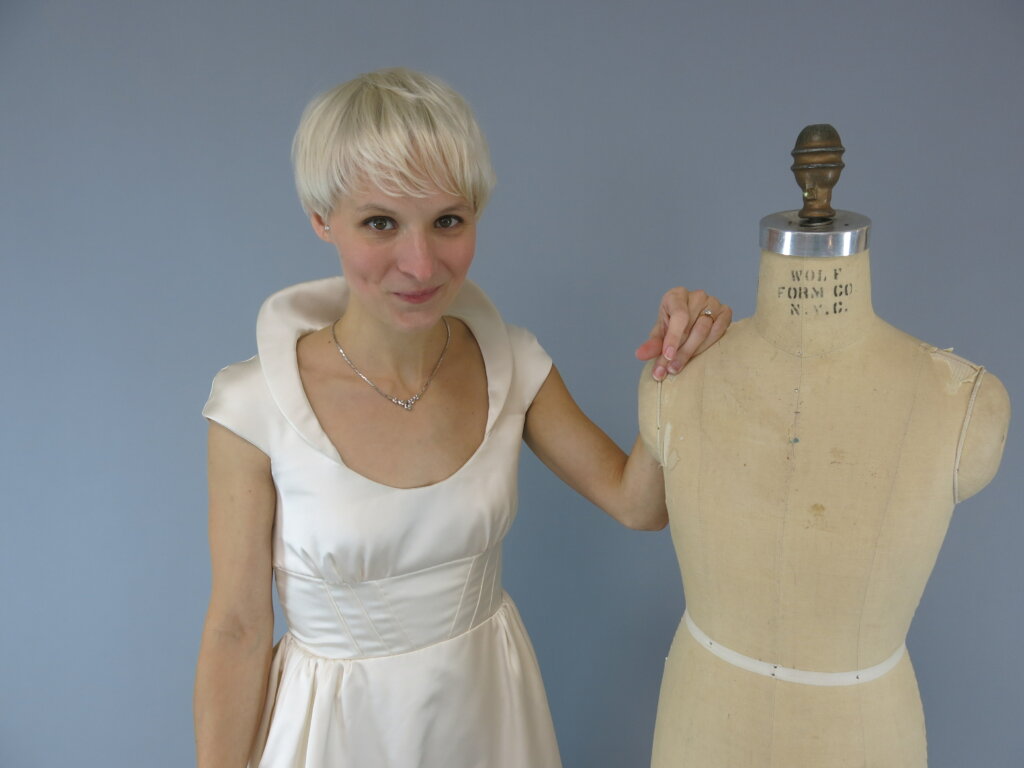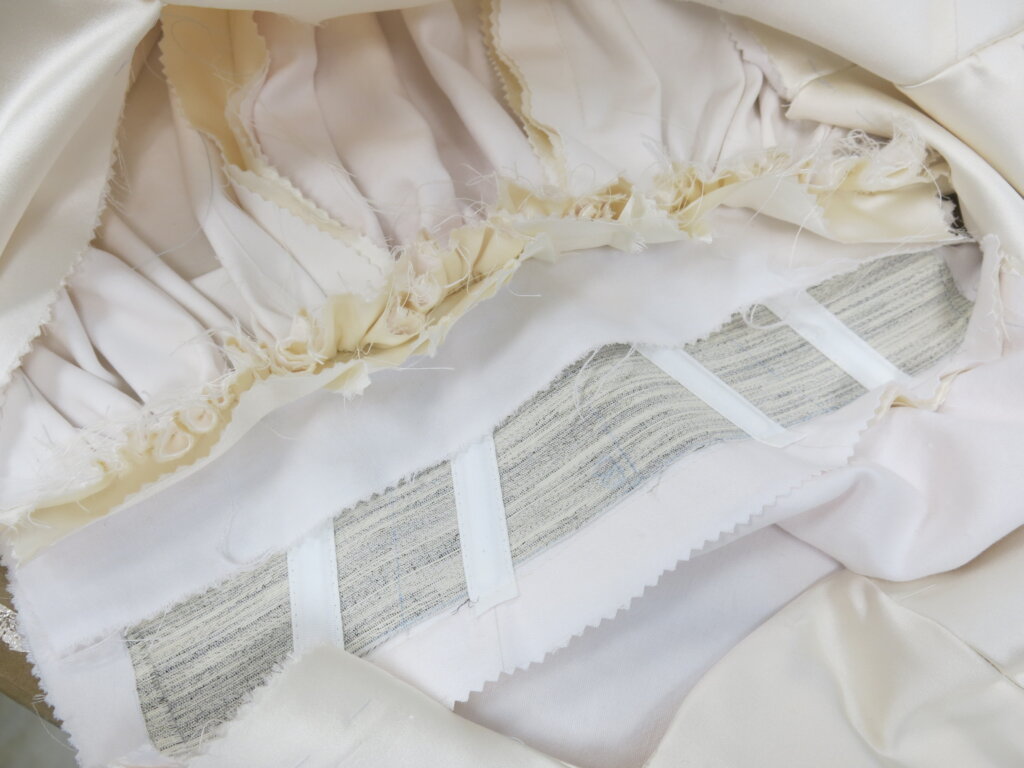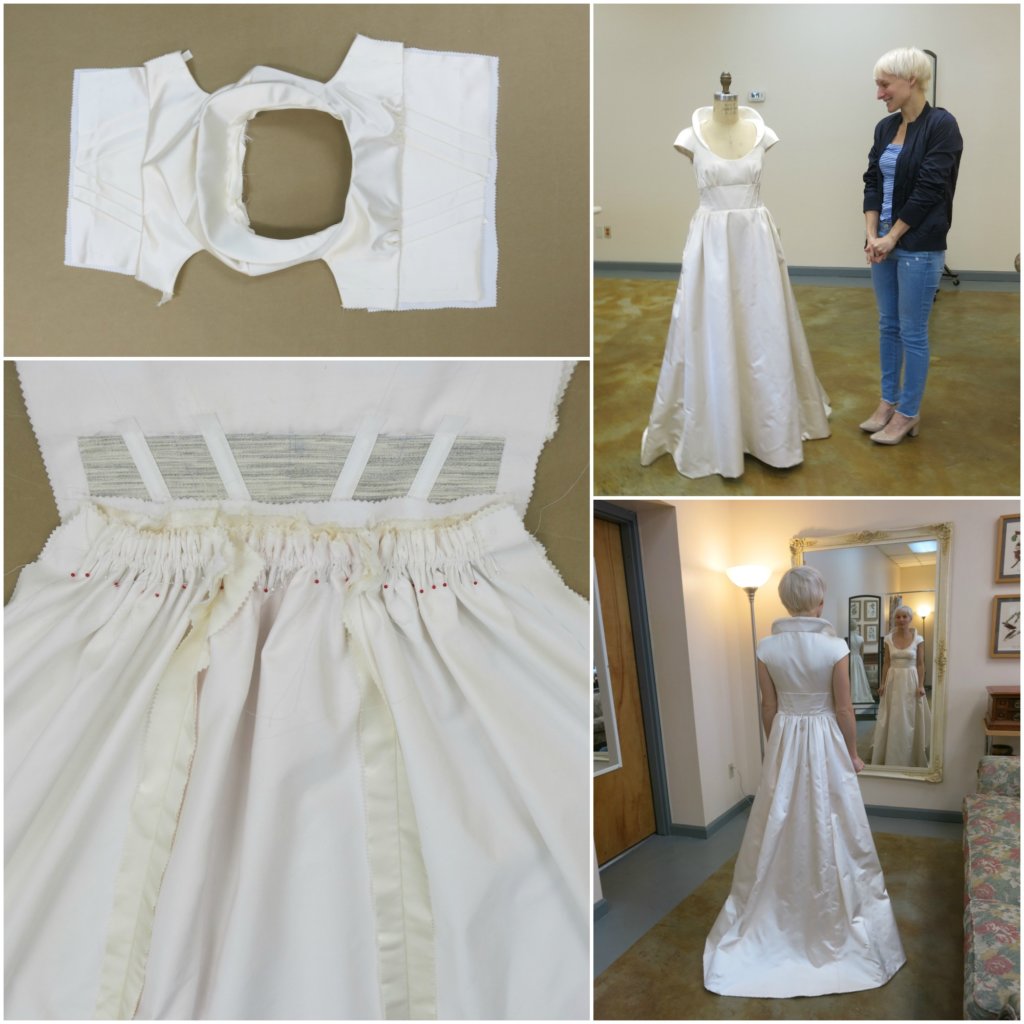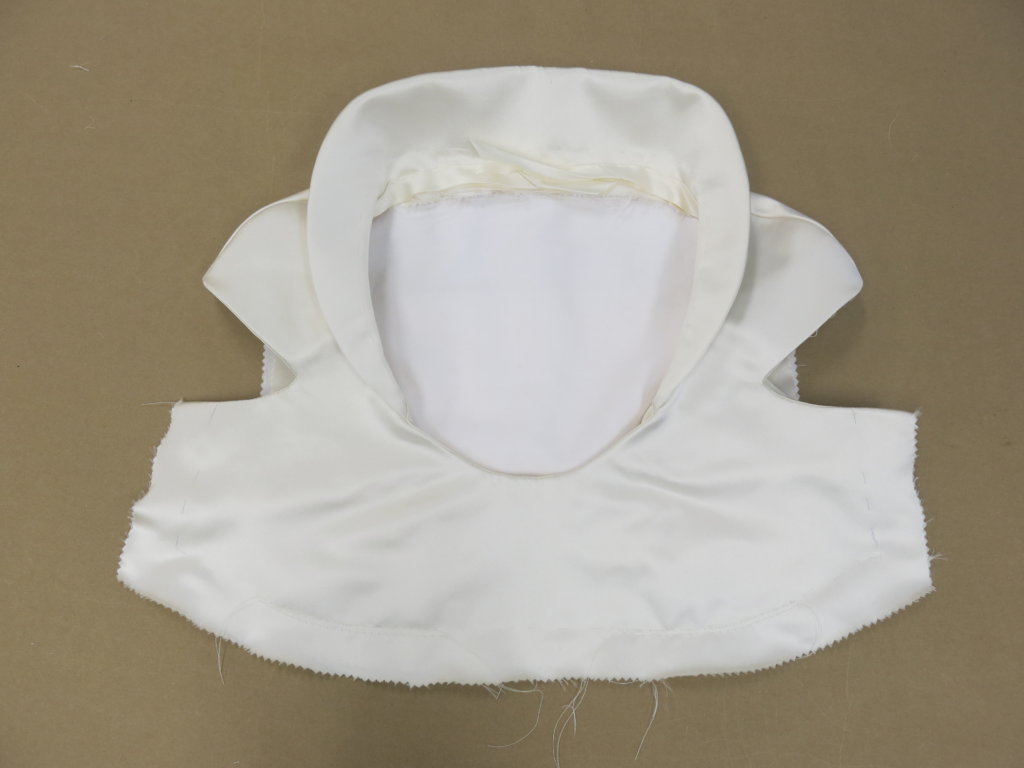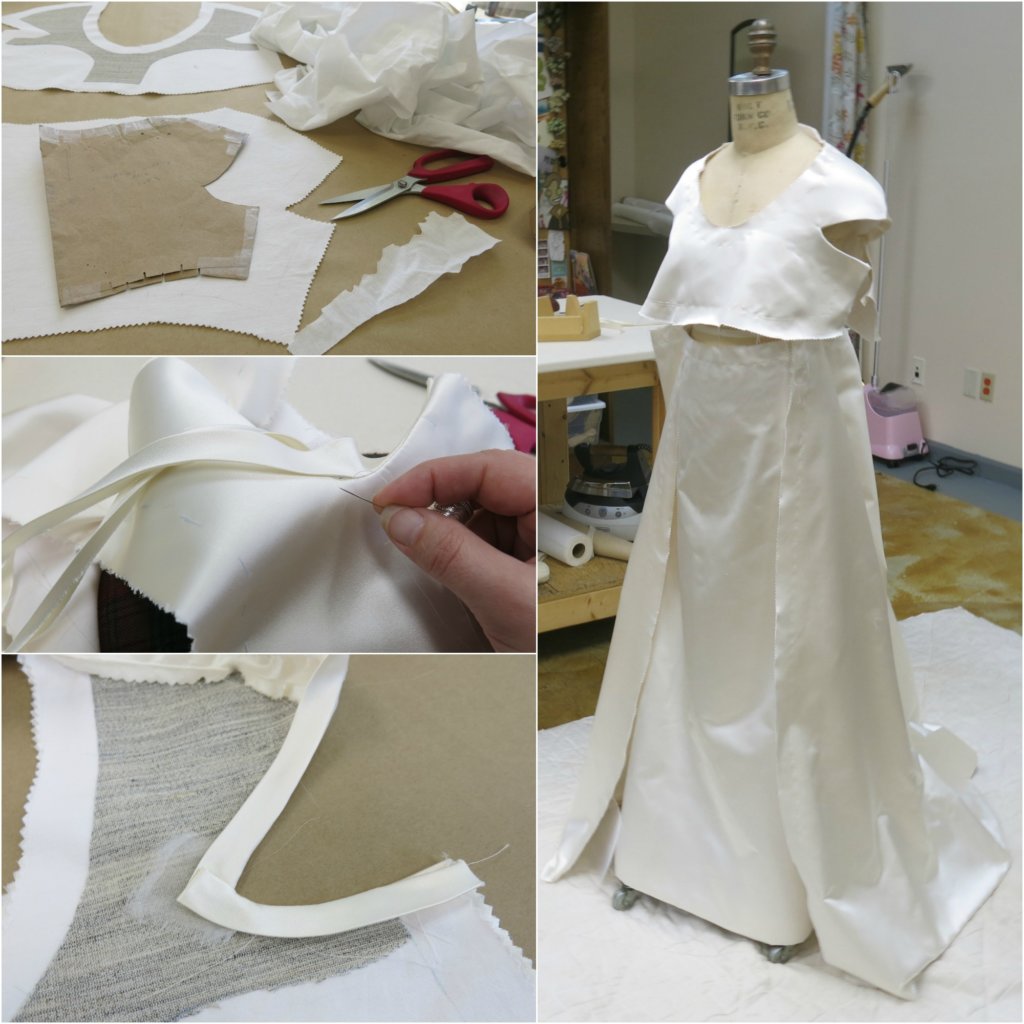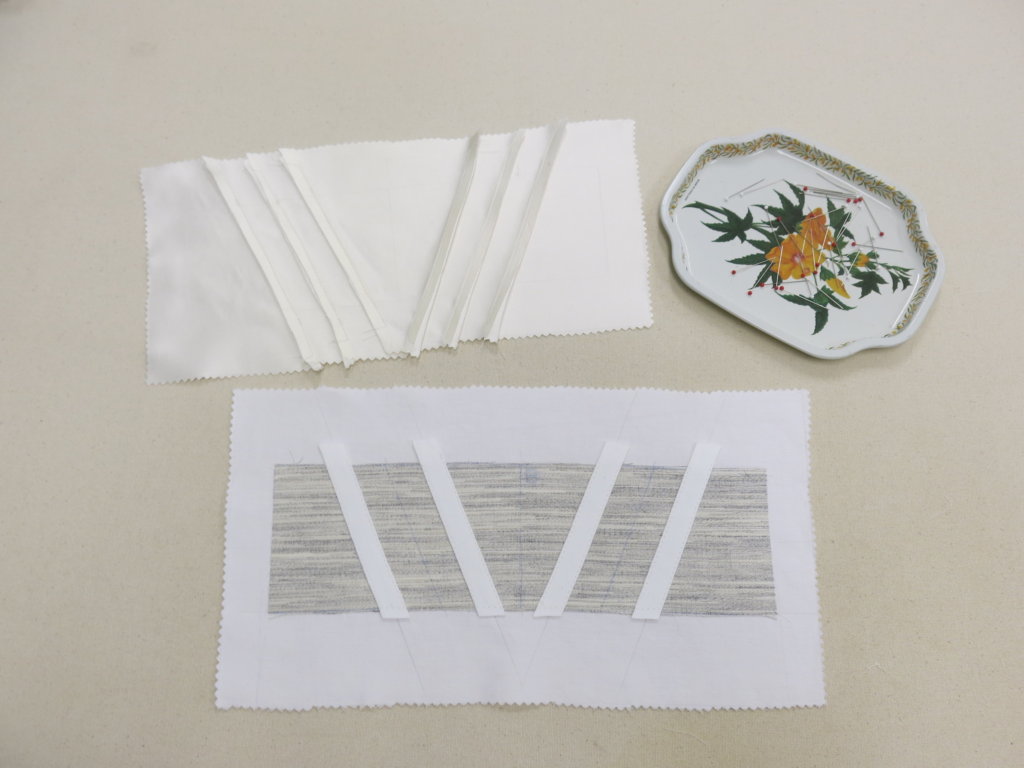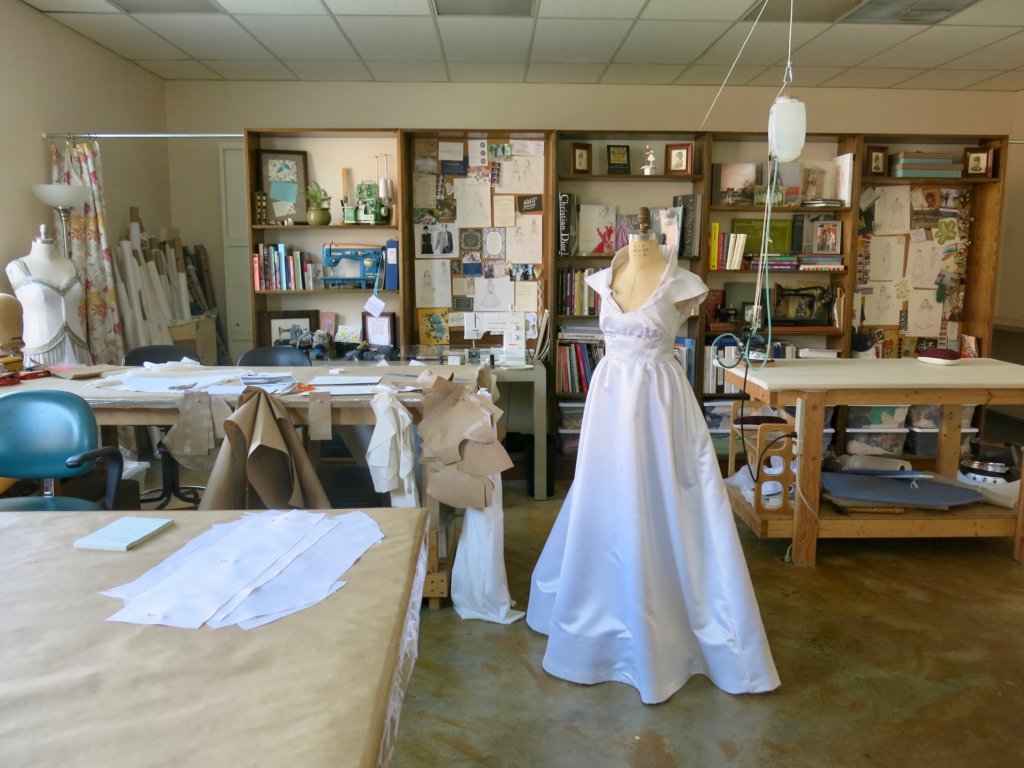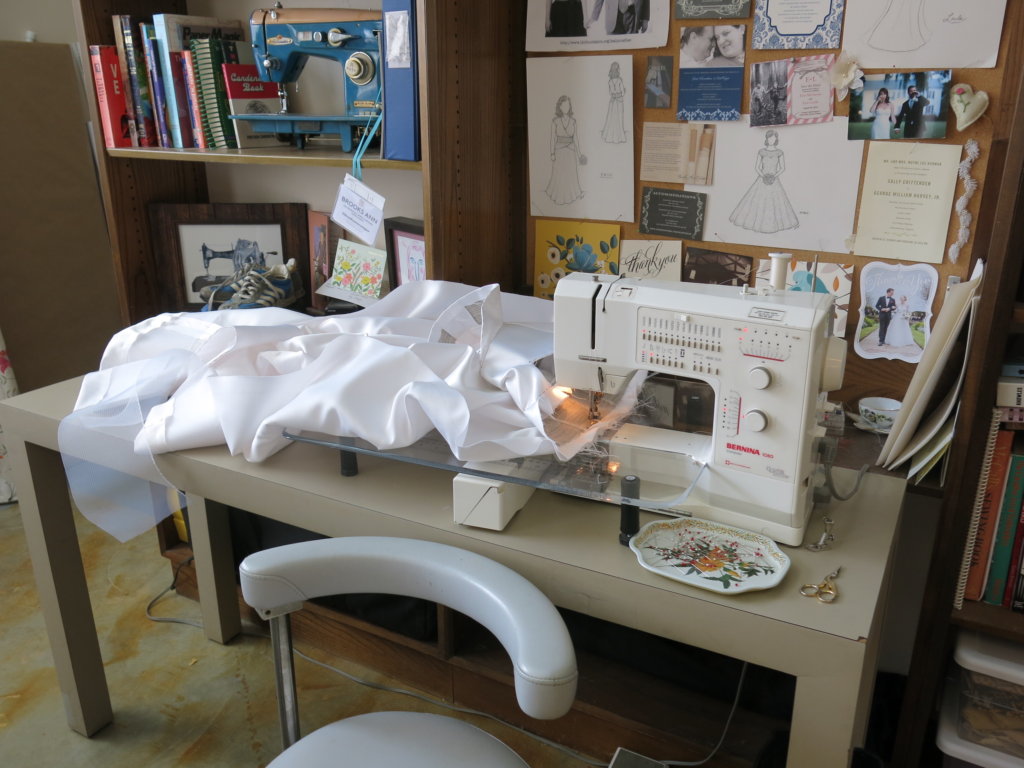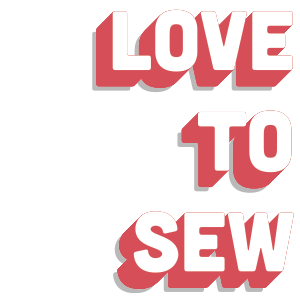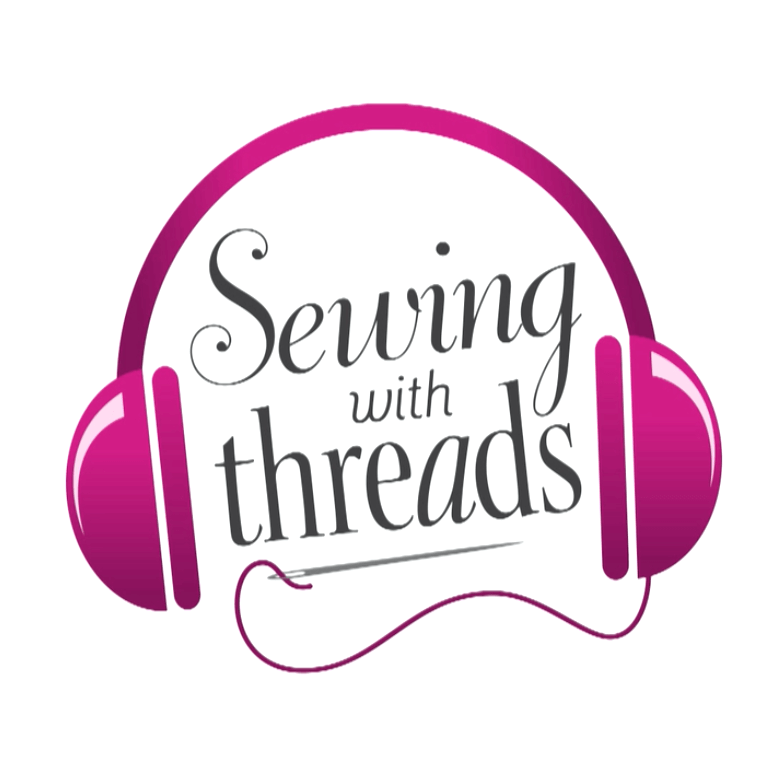Whew! After Michelle’s special order fabrics arrived, I began working like crazy on her wedding dress. So much so that I haven’t blogged in a few weeks! I’ve now got everything ready for our first Fabric Fitting next weekend, so I have a few days to try and catch you up. I tried to remember to take pictures during the process, so I’ll write a few blog posts about the bits I have photos for.
I started with the “train” of the skirt. It is the most complicated part of the dress and it is also the part that I know will not change due to fit. Because of this, I can actually completely finish this part of the dress, rather than putting it together with temporary stitches to be adjusted at the fitting. With all the folds, it would be unnecessarily time consuming to assemble now only to line and hem it later, so my plan was to do all of this while it was flat. But I’m getting ahead of myself…
First, there was a lot of marking and cutting to do. Each paper pattern piece was marked out onto a white silk twill that is used for flatlining the wool sateen. Flatlining is different from the dress lining (which will come later in the finishing process) in that it is hand-sewn to each piece of the dress before it is assembled. It acts as a way to “shadow” the seams (so you don’t see a white hard lines of inner seam allowances on the outside of the dress) and it gives you something to sew your hems and catch-stitches to without having to pick stitches through to the real fabric. In the end, the flatlining works harmoniously with the dress fabric creating smooth and perfect transitions on all the dress’s seams and edges.
The hidden pink panels on Michelle’s dress required another layer of the silk twill (in pink this time!). In this case, the wool of the dress was actually used as the flatlining so that these panels had the same weight and hand as the rest of the “train”. Shown below, you can see the wool sateen pieces pinned for the cutting and flatlining of the pink silk twill.

All of the seamlines are marked in white chalk pencil so that there is never a risk of the markings being seen on the finished dress. When I first started making wedding dresses, it was a little hard to see exactly where to sew a white line on white fabric. By now, I’ve gotten pretty used to perfectly sewing something that seems invisible.
You can also see in the photograph that I use a lot of white tissue paper once I start working in the actual fabric. Everything has to stay completely white and tidy throughout the dressmaking process all the way to the delivery of the dress! I recently got tired of buying packs of white tissue paper and invested in a 1,000 ft roll. Now I can cut pieces to length at my leisure. Ah, the small joys of dressmaking!




